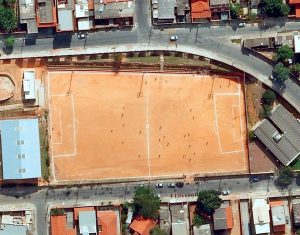
A catalogue featuring the complete series O Campo, published on the occasion of an exhibition at Sala BBK in Bilbao, organized by Fundación Athletic Club. Introduction by Galder Reguera (text in Basque, Castilian, and English).
2012 by Fundación Athletic Club, Bilbao
offset, colour
22 x 17 cm, 64 pages
hardcover, sewn
ISBN 978 84 8056 312 3









